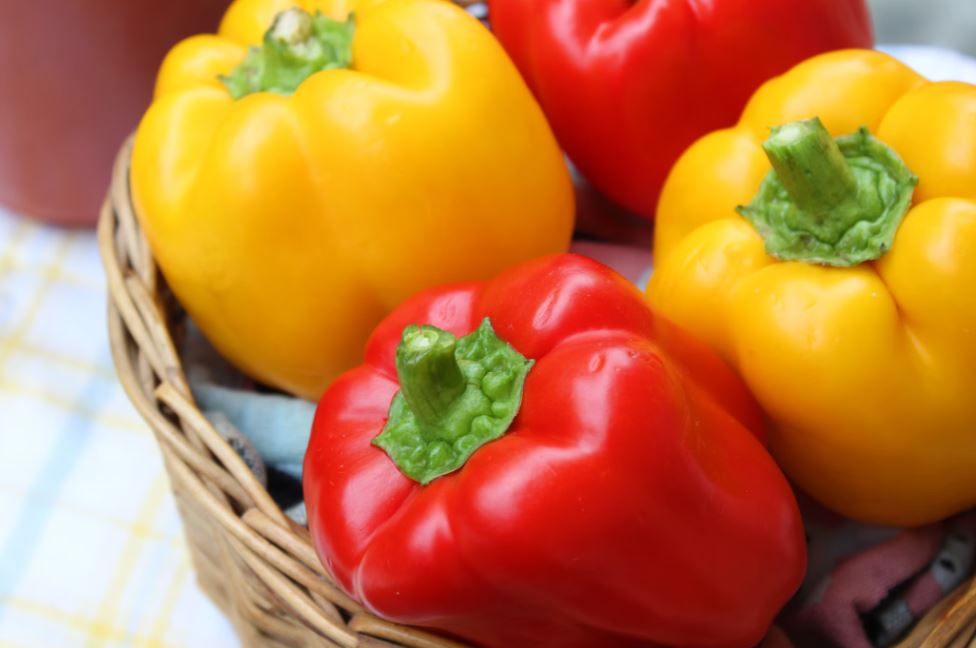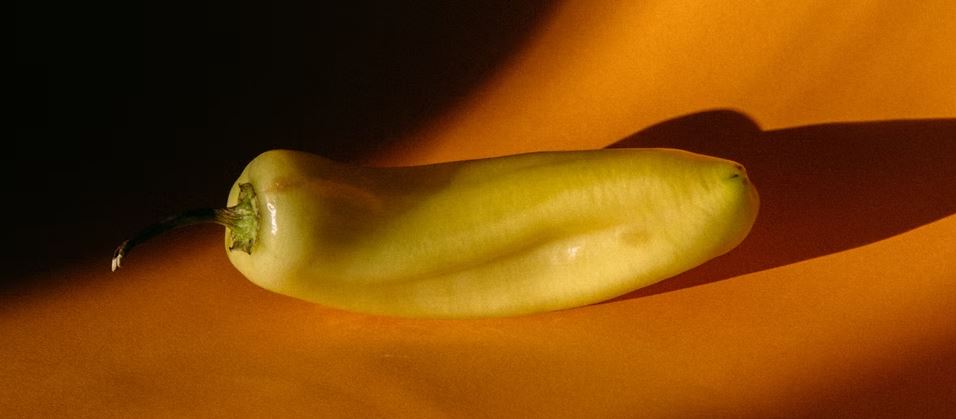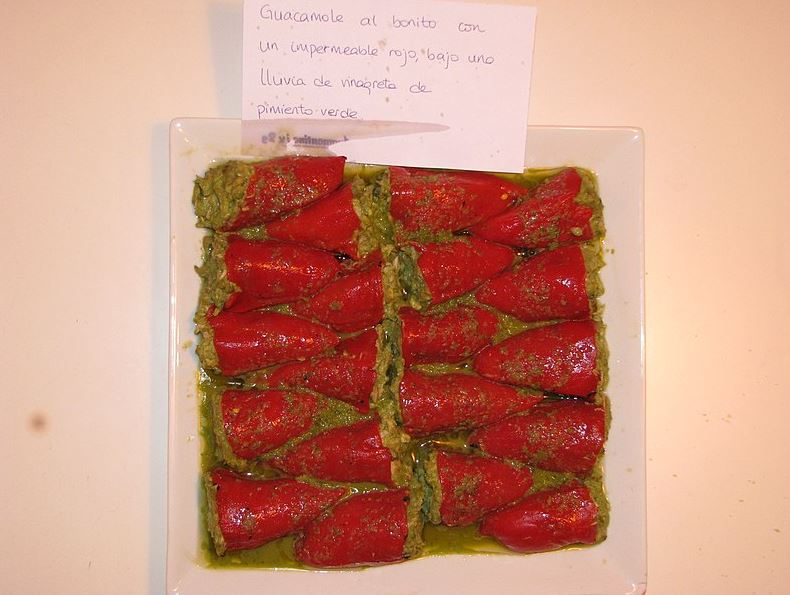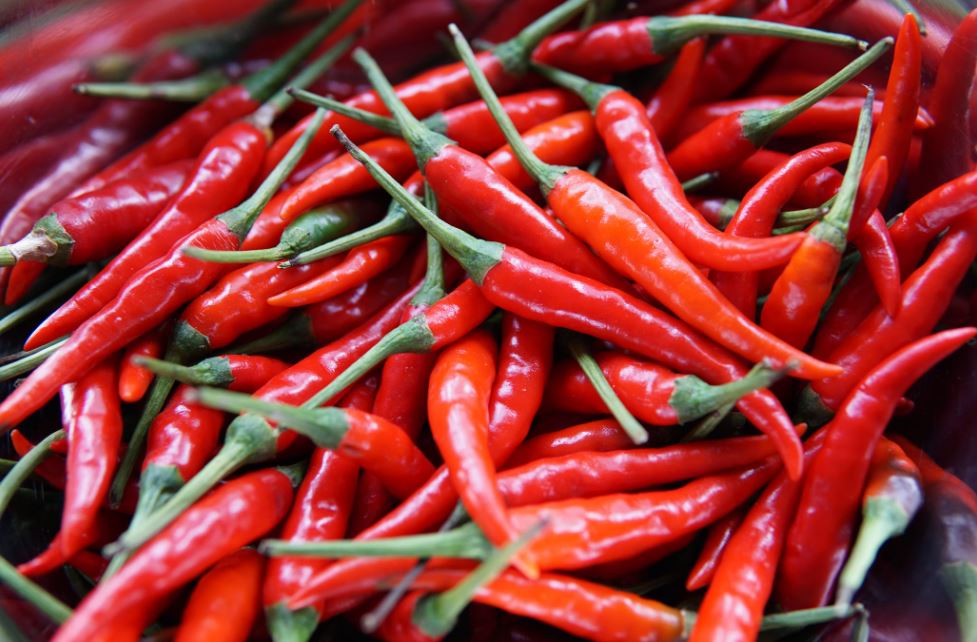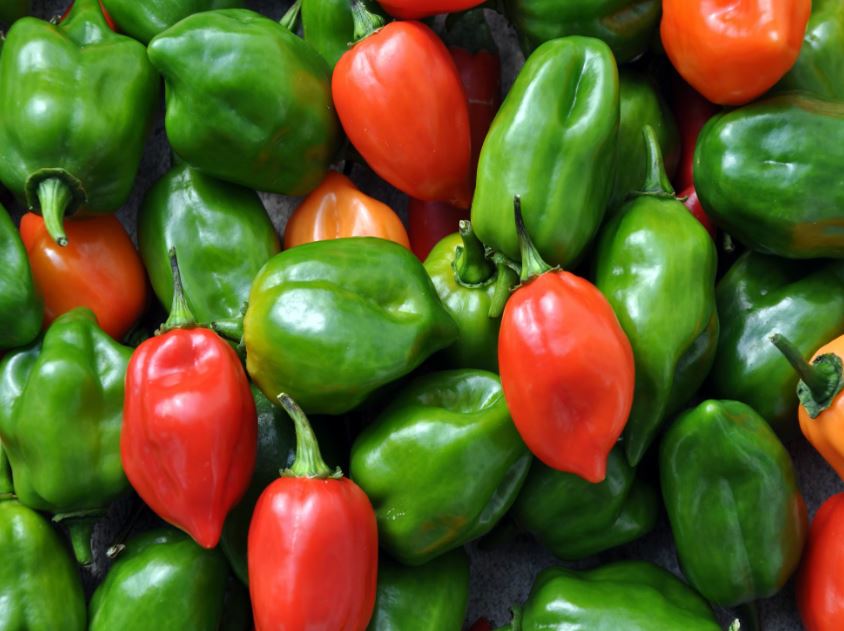More than 30 species of flowering plants of the nightshade family (Solanaceae) belong to the pepper genus Capsicum, some of which are widely farmed for their palatable, frequently peppery fruits. The genus includes all the different varieties of fleshy-fruited peppers, such as the mild bell peppers that are consumed as vegetables and the hot peppers, such as the habanero and tabasco, that are consumed as relishes, pickled, or ground into a fine powder for use as spices. Peppers can also be planted for decoration.
Although pepper plants are perennials, they are typically planted as delicate summer annuals outside of their natural habitat. They are multiplied by sowing seeds directly into the ground or by transplanting seedlings that have been begun in greenhouses or hotbeds and grown for six to ten weeks. The plants have simple, alternately arranged leaves with smooth margins, and as the growing season goes on, they start to go woody. Small with five white petals, the paired or solitary flowers are usual. Berries make up the fruit. The aj charapita pepper, which is small and practically spherical, the long and thin tabasco pepper, and the enormous, wrinkled fruits of the bell pepper are just a few examples of the many different sizes and shapes of pepper fruits.
Hot Pepper
Capsaicin, a compound with bitter vapors and a burning taste, is the source of the pungency in hot peppers. Capsaicin, which was initially discovered in 1876 and is known to promote gastrointestinal secretions, is largely concentrated in the internal partitions of the fruit.
Where is Pepper Grown?
A fruit is pepper. It is the fruit of the tropical Indian perennial vine Piper nigrum. For it to thrive, the climate must be hot, muggy, and sunny. Long, hanging clusters of the berries grow. The single berry produces black, white, and green peppercorns. The color diversity is merely caused by the varying times and methods used in their harvesting and processing. Each variety of pepper has a distinct flavor profile and function in our cuisine. Since 2000 BC, black pepper has been a staple in Indian cuisine. Pepper was a pricey ingredient in the spice trade between India and the Roman Empire, which prospered. The culinary and financial appeal of pepper was a major factor in why European nations looked for new trade routes, which helped to pave the way for the Age of Exploration.
The market for spices worldwide is still dominated by black pepper today. The major producing nations are Vietnam, Indonesia, India, and Brazil. It imported one-fifth of all spices into the world in 2016, according to the International Trade Center. All pepper is not created equal. A few spices are referred to as peppercorns. But more on that later; they aren’t even botanically related to pepper.
Pepper Nutrition
Each species of pepper has a unique nutritional profile, benefits also in consuming peppers, but in general, many are excellent sources of vitamin C. Many also offer a good quantity of vitamin A. The primary component in peppers that gives them their hot flavor, capsaicin, has long been utilized medicinally. Peppers, however, also belong to the nightshade family, which is linked to inflammation. It may be suggested that people with autoimmune diseases stay away from them.
What Does Pepper Taste Like?
Get some pepper if you have any nearby. Shake some out of a shaker or grind it. Inhale it. Is it fresh or stale? Sharp or earthy? Put a little on your tongue. Try biting into a whole peppercorn if you have the courage. Initial sensations are prickly, followed by an energizing warmth that spreads. You experience various feelings depending on the grind. When you use large chunks of ground pepper rather than a dusting of finely powdered pepper, the heat is stronger and more energizing.
Types of Peppers
Peppers and chiles don’t exactly deliver the sweet, juicy sensations you expect from berries in the summer, despite being technically fruits in most cases and having a robust summer season. In contrast, they push our taste buds to the limit. In the summer, when they can take the heat and enjoy dry weather, peppers grow well. They enjoy the heat, enjoy producing heat, and enjoy bringing heat into our kitchens. Most plants will continue to produce well into the fall.
1. Bell Peppers
Other names for bell peppers are sweet pepper and sweet bell pepper. When compared to other hot peppers, bell peppers are larger and come in a variety of colors, including green, yellow, orange, red, and occasionally purple. In their green stage, they taste harsh because they are not yet fully ripe, but as they ripen, they become sweet. Bell peppers don’t have a fiery flavor, but they give dishes color and sweetness and are delicious when stuffed.
Scoville Heat Units: 0
2. Banana Peppers
Yellow wax pepper is another name for banana peppers. The name refers to the medium-sized peppers’ bright yellow appearance and acidic, mild flavor. They are commonly served pickled and get sweeter as they ripen. They are also a great source of vitamin C.
Scoville Heat Units: 0 to 500
3. Piquillo Peppers
Like bell peppers, Spanish piquillo peppers are sweet without any spiciness. As tapas or with meat, shellfish, and cheese, they are most frequently served roasted, peeled, and preserved in oil.
Scoville Heat Units: 0 to 500
4. Friggitello Peppers
In the US, this is also known as pepperoncini, or sweet Italian peppers. These bright yellow peppers, which are native to Italy, have a mildly bitter taste and are only marginally hotter than bell peppers. Although in Italy, the term “pepperoncini” refers to a different, spicier pepper, they are usually pickled and sold in jars and are called such in the United States.
Scoville Heat Units: 100-500
5. Cherry Peppers
Pimento or Pimiento are other names for cherry peppers. Although the Spanish term for pepper is pimiento, the English word “pimiento” refers to the cherry pepper that has a heart-shaped shape. It is used in pimento cheese and usually offered pickled in jars. It is mildly spicy. Additionally, it’s a component of the chicken riggies pasta dish, a delicacy of Syracuse, New York.
Scoville Heat Units: 100-500
6. Shishito Peppers
Shishitgarashi, Kkwari-gochu, and groundcherry pepper are further names for this variety of pepper. Shishito peppers are typically gathered when still green and have a mildly bitter taste. According to statistics, one in ten of these peppers is spicy. Although they are typically served burnt or blistered, they can also be eaten raw.
Scoville Heat Units: 100 to 1,000
7. Hatch Peppers
New Mexico Chile is another name for this. Hatch peppers are a common New Mexican chile kind and are consumed often there. They taste smokey and have a mild onion-like odor and faint spiciness. Hatch chiles are famous for their great quality and flavor, and they are farmed in the Hatch Valley, an area that runs along the Rio Grande River.
Scoville Heat Units: 0 to 100,000
8. Anaheim Peppers
This Anaheim Pepper is also known as a New Mexico Chile in addition to Hatch Peppers. Although they are grown elsewhere, Anaheim peppers are a type of New Mexican pepper. They are hotter than a bell pepper but not as hot as, say, a habanero. In the grocery store, you can frequently find them as dried red peppers or green peppers in cans.
Scoville Heat Units: 500 to 2,500
9. Chilica Peppers
When dried, this chili pepper is known as a pasilla. These wrinkled chiles have a prune-like flavor, black meat, and a moderate amount of heat. They are frequently mixed with fruits in sauces after they are dried. Chili pepper is also included to exotic vegetables that you can add to your diet.
Scoville Heat Units: 1,000 to 3,999
10. Poblano Peppers
When dried, this kind of pepper is known as ancho. These substantial green peppers are native to Puebla, Mexico, and although they are generally mild, particularly when they are young, they become hotter as they grow. Frequently, poblanos are roasted, stuffed, or added to mole sauces.
Scoville Heat Units: 1,000 to 5,000
11. Hungarian Wax Peppers
Hot yellow pepper is another name for Hungarian wax peppers. Hungarian wax peppers have a similar appearance to banana peppers but have a significantly spicier flavor. They are just as crucial to Hungarian cooking as paprika because of their heat and floral scent.
Scoville Heat Units: 1,000 to 15,000
12. Mirasol Peppers
When dried, this kind of pepper is also known as Guajillo. Mildly hot mirasol peppers, which are native to Mexico, can be used in marinades, rubs, and salsas. They are most frequently seen dried as guajillo peppers. Initially tart and fruity, they have a deeper flavor when dried.
Scoville Heat Units: 2,500 to 5,000
13. Fresno Peppers
Although it thrives all over California, this Anaheim and Hatch pepper cousin is native to New Mexico. Its high flesh-to-skin content makes it ideal for stuffing. It is green when unripe but turns orange and crimson as it ripens. Red Fresnos are useful when you want to give a dish a kick because they are spicier and less delicious than jalapeno.
Scoville Heat Units: 2,500 to 10,000
14. Jalapeño Peppers
When smoke-dried, this is also known as Chipotle. Although it will turn red as it ripens, the jalapeo pepper is a Mexican chili that is picked off the vine when it is still green. They are frequently used in salsas and have a mildly fruity flavor while yet being quite hot. It’s also fantastic for enhancing mac and cheese.
Scoville Heat Units: 3,500 to 8,000
15. Serrano Peppers
These little peppers have a stronger heat than a jalapeo. They are native to Mexico, where they are frequently used in cooking, and due of their fleshiness, they are a great addition to salsa.
Scoville Heat Units: 10,000 to 23,000
16. Cayenne Peppers
Finger Chile is another name for this variety of pepper. This hot red chile is perhaps best known to you in its dried form, which is a common spice in many kitchens. It is a key component of chili powder, which is a mixture of spices rather than a single chile.
Scoville Heat Units: 30,000 to 50,000
17. Bird’s Eye Peppers
Thai chile is another name for this bird’s eye pepper. These tiny red chilies, which are used in Asian cooking, are surprisingly fiery for their size. They come fresh or dried and are used in sambals, sauces, marinades, stir fries, soups, and salads. If you can get over the heat, they are also fruity despite their undeniable spice.
Scoville Heat Units: 50,000 to 100,000
18. Peri-Peri
African Bird’s Eye, Piri Piri, and Pili Pili are names for this variety of pepper. These diminutive yet potent Portuguese peppers are probably most known for the acidic, fiery African hot sauce they are used to manufacture.
Scoville Heat Units: 50,000 to 175,000
19. Habanero Peppers
These tiny orange peppers are used in salsas and hot sauces because of their flowery flavor, rich scent, and reputation for being incredibly fiery. They are well-liked in the Caribbean and the Yucatan Peninsula of Mexico.
Scoville Heat Units: 100,000 to 350,000
20. Scotch Bonnets
Caribbean red pepper and Bonney pepper are two names for this variety of pepper. Despite having a similar appearance, the Scotch bonnet should not be confused with the habanero; although both are hot, the Scotch bonnet is sweeter and has a more pronounced thick shape. Its name comes from the flat Scottish hat called a tammie that it resembles and is often used in Caribbean cooking and jerk flavor.
Scoville Heat Units: 100,000 to 350,000
21. Tabasco Peppers
The main ingredient of Tabasco hot sauce is this little, fiery pepper. The common hot sauce also contains vinegar, which substantially lessens their intensity. They are the only variety of chili pepper that are juicy inside rather than dry.
Scoville Heat Units: 30,000 to 50,000
22. Pequin Peppers
Piquin is another name for this. If you’ve ever had Cholula hot sauce, you’ve tried a pequin pepper. Pequin peppers are tiny but incredibly hot, and they’re frequently used in pickling, salsas, sauces, and vinegars. In addition to being spicy, they are also said to have a lemony and nutty flavor.
Scoville Heat Units: 30,000 to 60,000
23. Rocoto Peppers
These huge peppers, often known as hairy peppers, are cunning because they resemble bell peppers yet are almost as hot as habaneros. They come in orange, red, and yellow hues, and inside are seeds that are a stunning black color. They are frequently used in salsas because of their size, which produces a lot of crisp flesh.
Scoville Heat Units: 30,000 to 100,000
24. Ghost Peppers
This also goes by the name Bhut Jolokia. Even those who enjoy heat avoid the ghost pepper since it is 400 times hotter than Tabasco sauce and 100 times hotter than a jalapeo. It is indigenous to Northeastern India, and a little bit goes a long way when used in curries, pickles, and chutneys.
Scoville Heat Units: 1,000,000
25. Komodo Dragon
Despite popular belief, Komodo dragon peppers are comparable to ghost peppers in terms of spiciness. They initially have a sweet flavor before becoming hot, at which point you probably regret ever chewing into it.
Scoville Heat Units: 1,400,000

